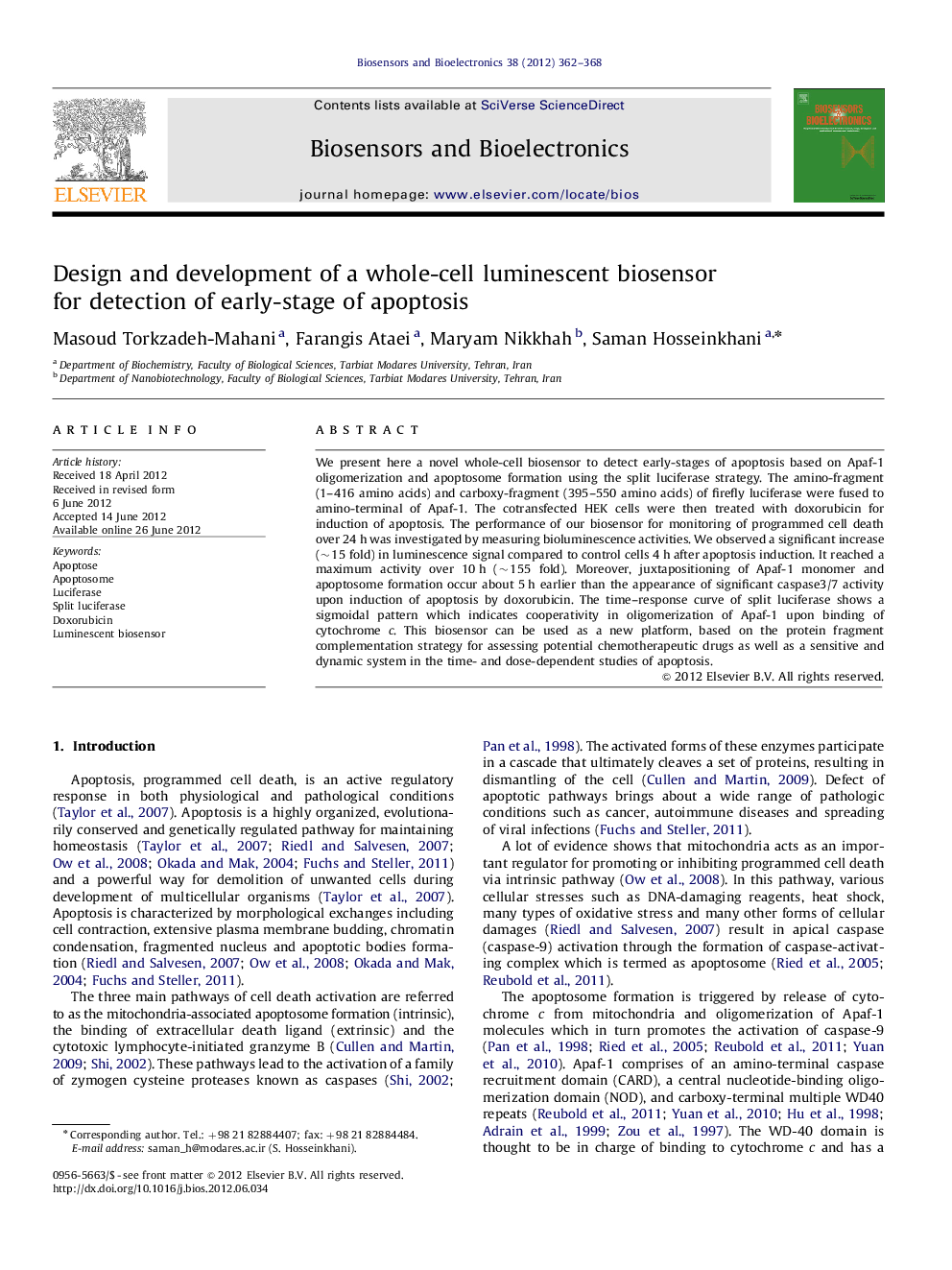| Article ID | Journal | Published Year | Pages | File Type |
|---|---|---|---|---|
| 867316 | Biosensors and Bioelectronics | 2012 | 7 Pages |
We present here a novel whole-cell biosensor to detect early-stages of apoptosis based on Apaf-1 oligomerization and apoptosome formation using the split luciferase strategy. The amino-fragment (1–416 amino acids) and carboxy-fragment (395–550 amino acids) of firefly luciferase were fused to amino-terminal of Apaf-1. The cotransfected HEK cells were then treated with doxorubicin for induction of apoptosis. The performance of our biosensor for monitoring of programmed cell death over 24 h was investigated by measuring bioluminescence activities. We observed a significant increase (∼15 fold) in luminescence signal compared to control cells 4 h after apoptosis induction. It reached a maximum activity over 10 h (∼155 fold). Moreover, juxtapositioning of Apaf-1 monomer and apoptosome formation occur about 5 h earlier than the appearance of significant caspase3/7 activity upon induction of apoptosis by doxorubicin. The time–response curve of split luciferase shows a sigmoidal pattern which indicates cooperativity in oligomerization of Apaf-1 upon binding of cytochrome c. This biosensor can be used as a new platform, based on the protein fragment complementation strategy for assessing potential chemotherapeutic drugs as well as a sensitive and dynamic system in the time- and dose-dependent studies of apoptosis.
► Novel biosensor is designed based on oligomerization of Apaf1 monomers. ► Split luciferase biosensor is designed using N-luc–Apaf-1 and C-luc–Apaf-1. ► Apoptosome formation occurs 5 h earlier than increase of caspase3/7 activity. ► Time–response curve of split luciferase indicates cooperativity in oligomerization. ► Current biosensor confirmed the apoptosome model within living cells.
